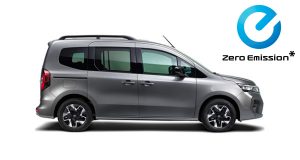NEW EMISSIONS TESTING: WHAT YOU NEED TO KNOW ON WLTP
INTRODUCING THE WLTP
When you choose a Nissan car, we want you to have all the facts at your disposal. This includes having accurate and clearly-expressed information about vehicle emissions and fuel consumption.
New legislation is now in place that makes this easier. This is called the Worldwide Harmonised Light Vehicles Test Procedure – or WLTP for short. All manufacturers will have to have their cars tested using the WLTP, before they can be put on sale.
Implementation began in September 2017 for new models or new powertrains, and WLTP is progressively replacing the previous testing process, the New European Driving Cycle or NEDC.
From January 2018, Nissan will start selling vehicles homologated according to the new procedure, and from September 2018 all Nissan cars for sale in our dealer network will be WLTP-homologated. From September 2019 the WLTP regulations will also be applied to light commercial vehicles.
During the transition from NEDC to WLTP, sometimes results using both systems will be quoted. The following summary explains the differences between the two test procedures, to allow enable customers to compare vehicles more easily

WLTP - A BETTER WAY OF TESTING
The WLTP testing method gives a more realistic set of figures for emissions and fuel consumption than the NEDC – closer to what you could achieve in everyday driving.
For example, the new test is conducted within a wider range of temperatures, lasts longer and covers more than double the NEDC test driving distance.
To better reflect normal driving conditions, the new test cycle includes more severe acceleration, shorter stops, a higher average speed and a higher maximum speed.
Instead of combining simulated urban and extra-urban driving, the vehicle is now tested in four different speed ranges.
The readings obtained thus reflect different driving styles in different conditions.
The figures also take into account differences in a vehicle’s equipment – including individual options – across the model range in question.


ON-ROAD FIGURES THAT ARE MORE REALISTIC
Despite its greater rigour, the WLTP remains purely a laboratory process. In order to make the final figures even more representative, a second testing procedure is being introduced.
This is called the Real Driving Emissions test – RDE for short. This requires vehicles to be tested on the road, in conditions that more accurately represent what an average driver could reasonably expect to achieve.
The RDE test combines uphill and downhill driving with low-speed urban roads, medium-speed rural roads and high-speed motorway mileage, and takes in high and low altitudes and variations in vehicle load and external temperature.
From September 2019 all new Nissan cars and light commercial vehicles will have been subject to the RDE test.
FIGURES THAT HELP YOU
The combination of WLTP and RDE means that the figures you’ll see in Nissan advertising and on the Nissan website will be much closer to real-life CO2 emissions and fuel consumption.
As always, there is likely to be some variance between the quoted figures and what you yourself achieve, but the new test procedures aim to close the gap.
Because of the new WLTP test conditions, the figures will be higher than those quoted under the obsolete NEDC test process. Nissan vehicles remain the same – it’s just that the standards by which they are tested have been improved.








